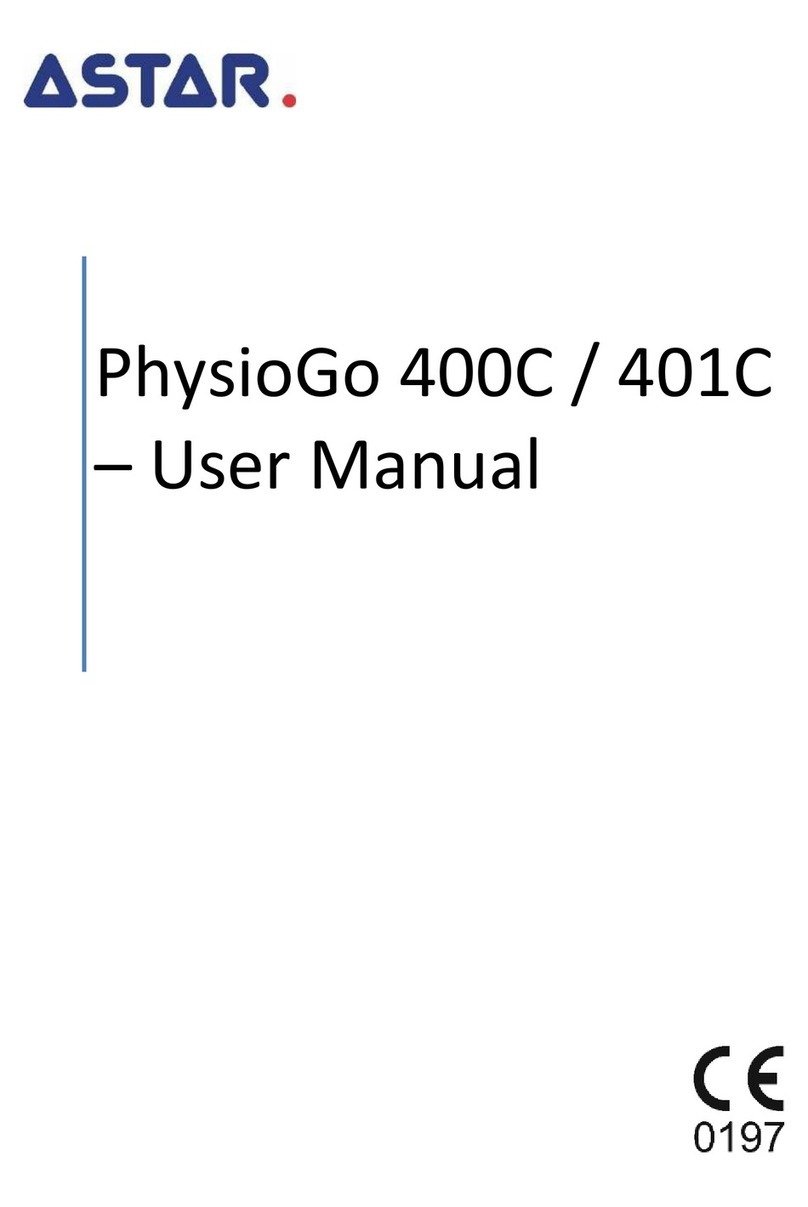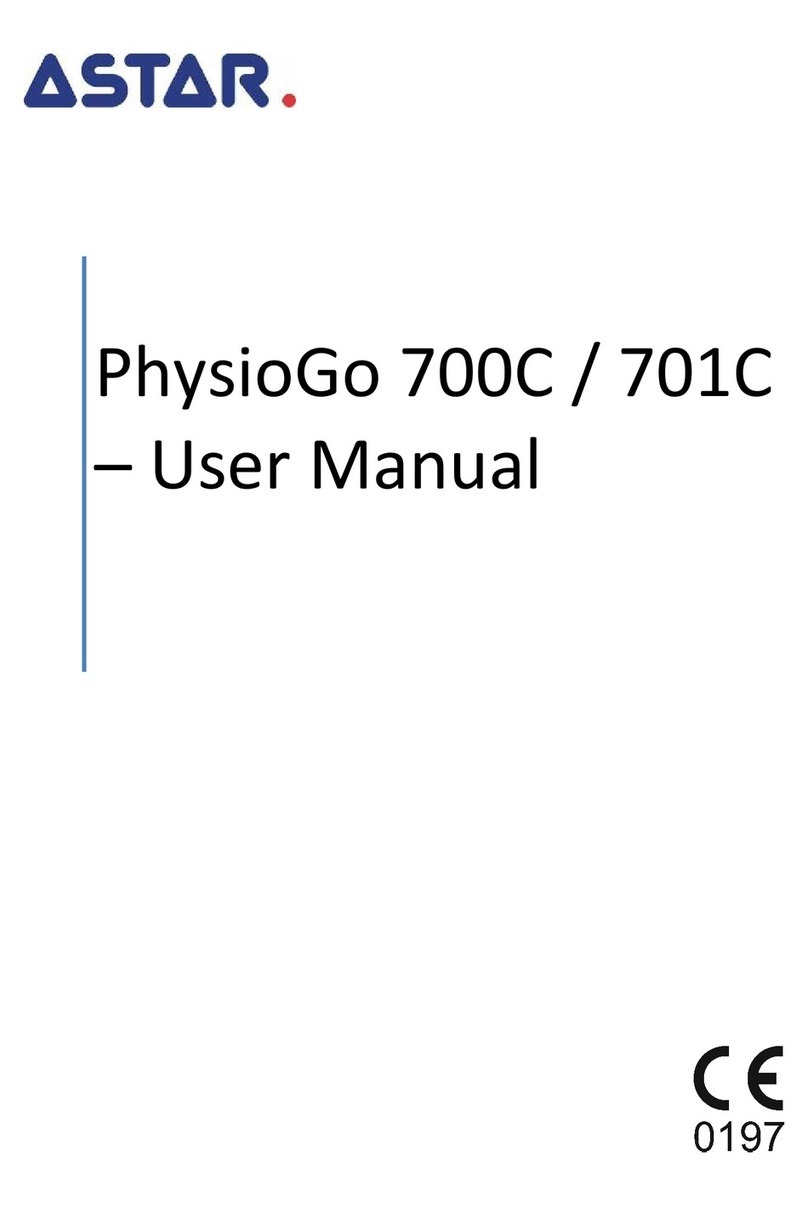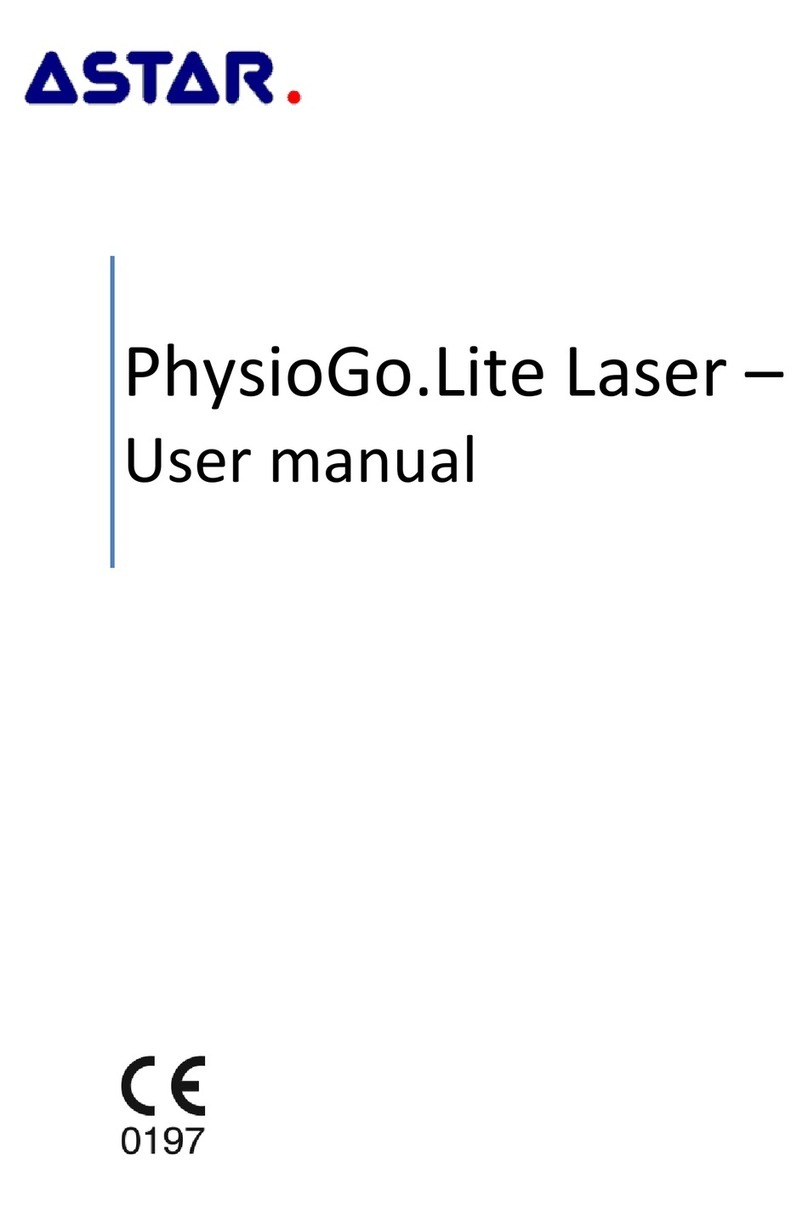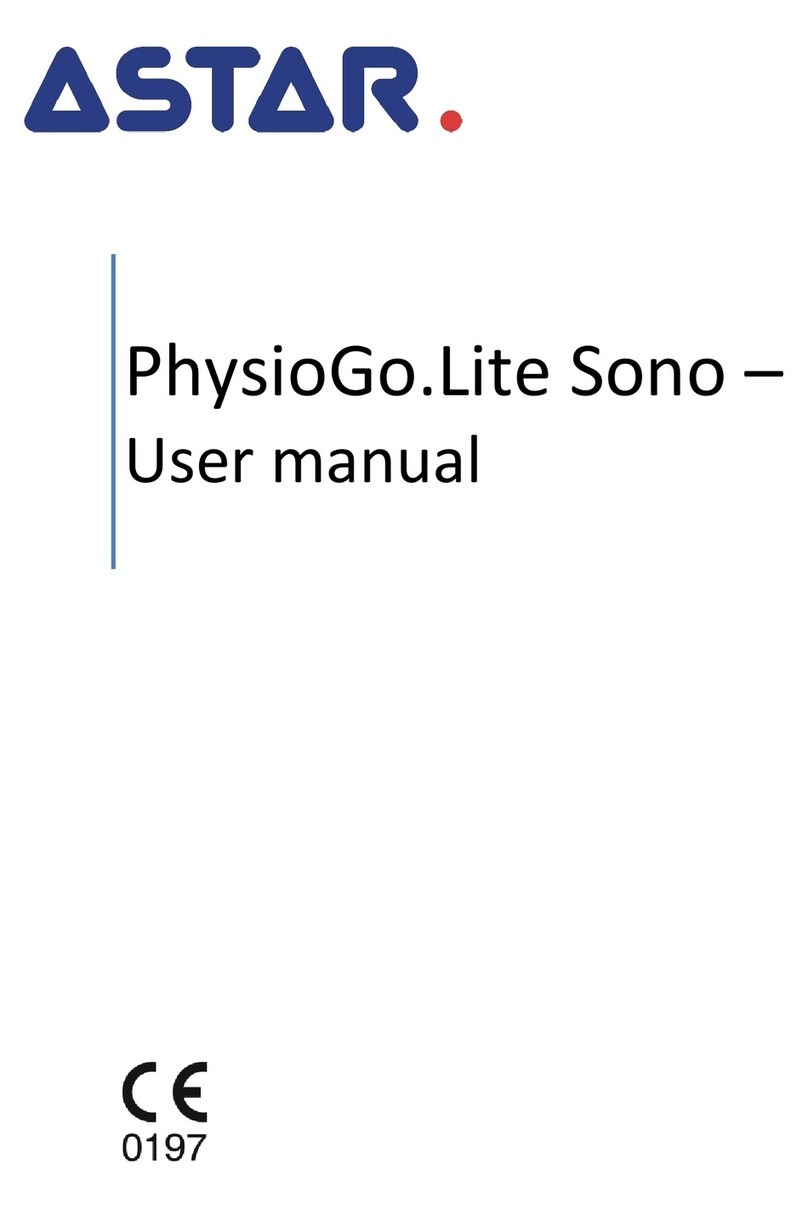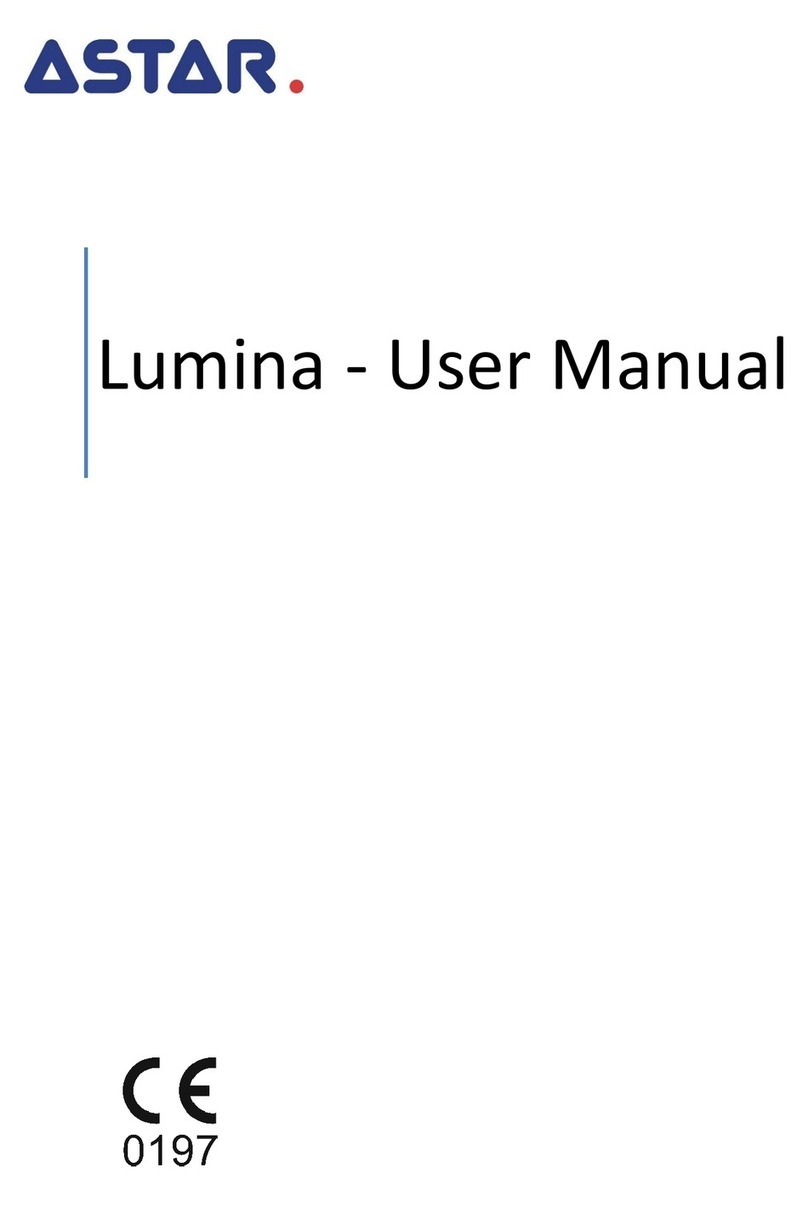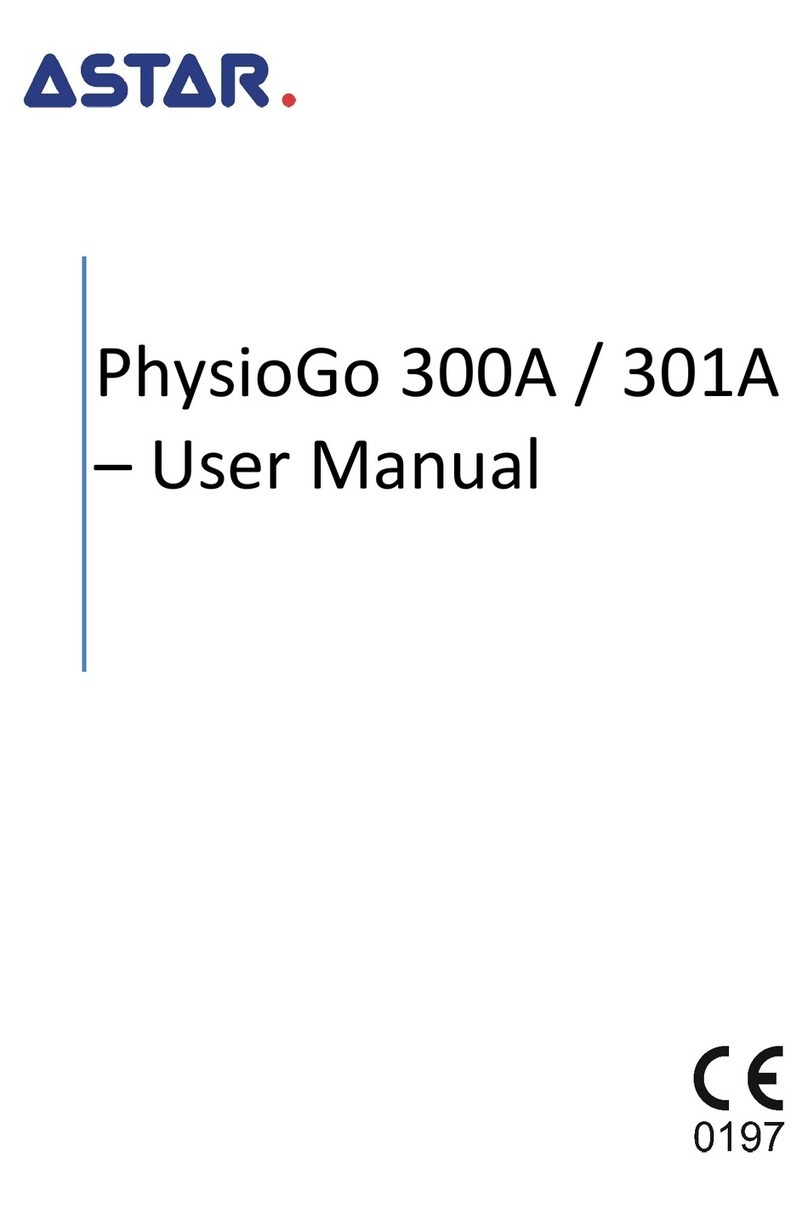
1. Basic information and contents
User Manual – PhysioGo.Lite Electro page 4 / 96
MANUAL MODE OPERATION ............................................................................................................................................. 38
USER PROGRAMS ........................................................................................................................................................... 38
USER SEQUENCES ........................................................................................................................................................... 39
I/T CURVE ............................................................................................................................................................... 42
SAFE SHUTDOWN PROCEDURE...................................................................................................................................... 43
8. DEFINITIONS AND PARAMETERS............................................................................................................................44
TERMINOLOGY .............................................................................................................................................................. 44
OUTPUT SIGNAL MODULATIONS......................................................................................................................................... 44
TREATMENT TIMER ......................................................................................................................................................... 45
TENS PULSE CURRENT .................................................................................................................................................... 45
INTERFERENTIAL CURRENTS............................................................................................................................................... 47
KOTZ’CURRENT (RUSSIAN STIMULATION) ............................................................................................................................ 48
MEDIUM FREQUENCY CURRENTS........................................................................................................................................ 50
SP-TENS PULSE CURRENT ............................................................................................................................................... 52
DIADYNAMIC CURRENTS................................................................................................................................................... 53
GALVANIC CURRENT .................................................................................................................................................. 54
ULTRA REIZ CURRENT (TRÄBERT’S CURRENT)................................................................................................................... 55
UNIPOLAR AND BIPOLAR SINE SURGE ............................................................................................................................. 56
LEDUC’S CURRENT..................................................................................................................................................... 58
RECTANGULAR PULSE CURRENTS................................................................................................................................... 59
TRIANGULAR PULSE CURRENTS ..................................................................................................................................... 61
NEOFARADIC PULSE CURRENTS ..................................................................................................................................... 63
MICROCURRENTS...................................................................................................................................................... 64
IG PULSES ............................................................................................................................................................... 65
EMS ..................................................................................................................................................................... 66
H-WAVES................................................................................................................................................................ 68
EXPONENTIAL PULSES................................................................................................................................................. 69
HUFSCHMIDT STIMULATION......................................................................................................................................... 71
TONOLYSIS .............................................................................................................................................................. 72
9. INDICATIONS AND CONTRAINDICATIONS...............................................................................................................75
INDICATIONS ................................................................................................................................................................. 75
9.1.1 TENS and SP-TENS current ............................................................................................................................. 75
9.1.2 Interferential and AMF currents..................................................................................................................... 75
9.1.3 Kotz’ current – Russian stimulation................................................................................................................ 76
9.1.4 Medium frequency currents ........................................................................................................................... 76
9.1.5 Diadynamic currents ...................................................................................................................................... 76
9.1.6 Galvanic current............................................................................................................................................. 76
9.1.7 Ultra Reiz current ........................................................................................................................................... 77
9.1.8 Sine Surge....................................................................................................................................................... 77
9.1.9 Leduc’s current............................................................................................................................................... 77
9.1.10 Rectangular impulses..................................................................................................................................... 77
9.1.11 Triangular impulses........................................................................................................................................ 78
9.1.12 Neofaradic currents ....................................................................................................................................... 78
9.1.13 Microcurrents................................................................................................................................................. 78
9.1.14 IG pulses......................................................................................................................................................... 78
9.1.15 EMS ................................................................................................................................................................ 79
9.1.16 H-waves ......................................................................................................................................................... 79
9.1.17 Exponential currents ...................................................................................................................................... 79
9.1.18 Hufschmidt stimulation and tonolysis............................................................................................................ 79
CONTRAINDICATIONS FOR ELECTROTHERAPY ......................................................................................................................... 80
10. MAINTENANCE, CLEANING, DISINFECTION............................................................................................................. 81
CLEANING OF THE UNIT AND SWITCH MODE POWER SUPPLY CASING ...................................................................................... 81
CLEANING OF TOUCHSCREEN ....................................................................................................................................... 81
CLEANING AND DISINFECTION OF THE ELECTROTHERAPY ACCESSORIES .................................................................................... 82
CABLE CONDITION CONTROL ........................................................................................................................................ 82
VERIFICATION OF ELECTRODES CONDITION ...................................................................................................................... 83
SPECIAL MESSAGES .................................................................................................................................................... 84
SELF-TEST PROCEDURE ............................................................................................................................................... 84
TROUBLESHOOTING ................................................................................................................................................... 85
FUSE REPLACEMENT .................................................................................................................................................. 86
11. SPECIFICATION AND ACCESSORIES .........................................................................................................................87


